19th-century photos of America's most famous attractions
America in black and white
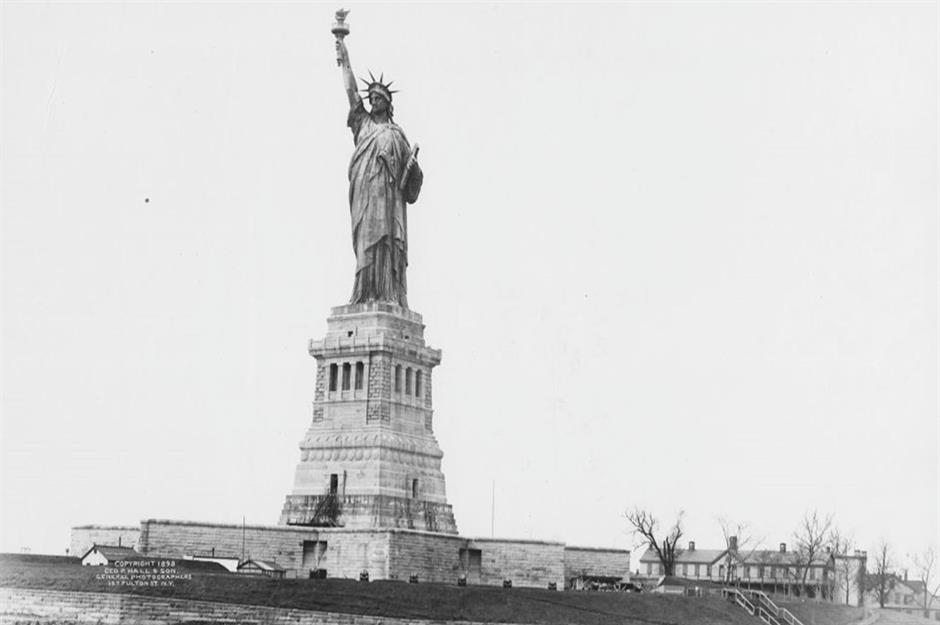
America is home to many famous landmarks that draw visitors from around the country and around the world. Some of its natural wonders date back centuries, while other attractions hark back to the economic and industrial boom years of the 1800s. These sites coincided with the advent of more affordable photography, meaning they could be captured on camera.
Click through this gallery to discover 19th-century images of famous tourist attractions in every US state...
Alabama: Fort Morgan, Gulf Shores
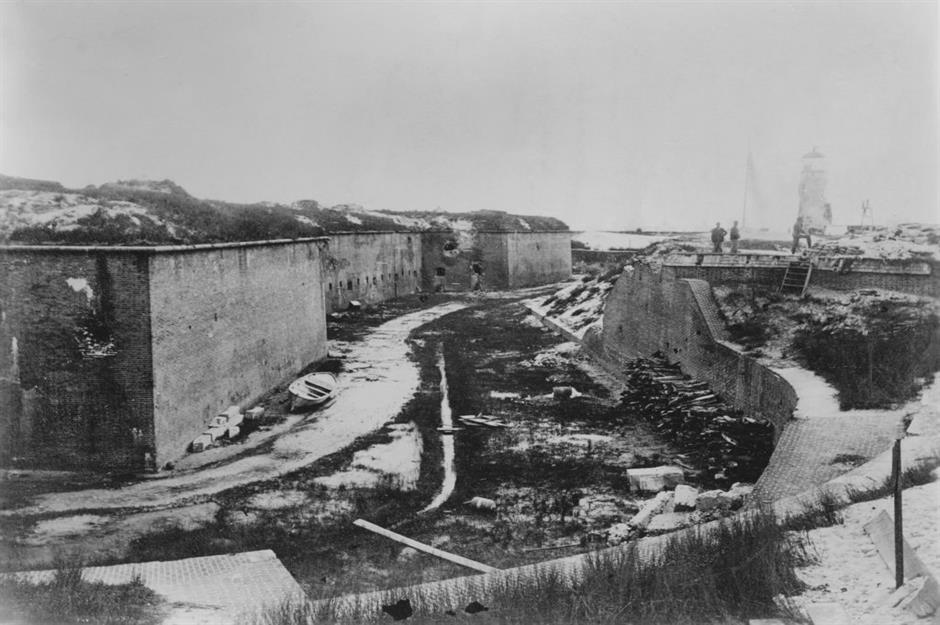
Fort Morgan has guarded Alabama's Mobile Bay since 1834. The fort is best-known for its role in the Battle of Mobile Bay during the Civil War in 1864, in which it surrendered to Union forces after a two-week siege shortly before this photo was taken, but it was also active during the Spanish-American War and both world wars. Now a National Historic Landmark, the massive fort contains more than 40 million bricks – a reflection on the skill and hardships of the enslaved African Americans who built it.
Alaska: Juneau waterfront, Juneau
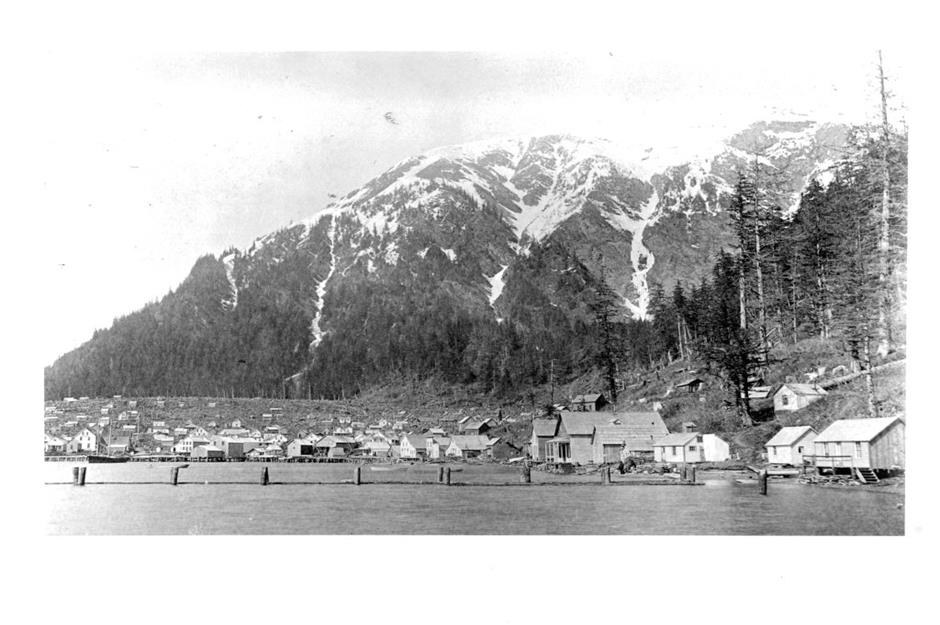
Juneau has been the state capital of Alaska since 1906, but was originally inhabited by Tlingit Indians, who fished its salmon-rich waters. It was settled by Joe Juneau and Richard Harris after gold was struck in 1880. This photo was taken in 1887 but would be fairly familiar for today's visitors, many of whom arrive on cruise ships and use the city as a base to explore the nearby Mendenhall Glacier, admire the mountain landscape, and watch local wildlife, including bears and whales.
Arizona: Grand Canyon, Grand Canyon National Park
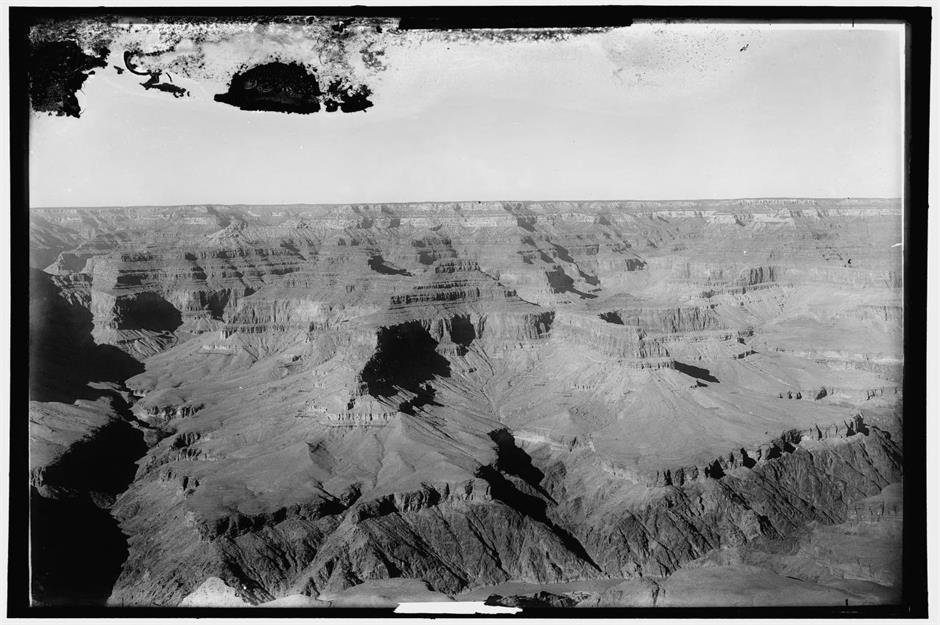
People have lived in what is now Grand Canyon National Park for thousands of years, and it covers the ancestral homelands of 11 present-day Native peoples, many of whom consider the mile-deep canyon a sacred place. Europeans arrived in 1540 but only began settling in the late 1800s when prospectors found copper – around when this photo was taken. Most of them quickly started making a living from tourism and the canyon was made a national park in 1919, one that's now visited by nearly five million people each year.
Arkansas: Hot Springs National Park, Hot Springs
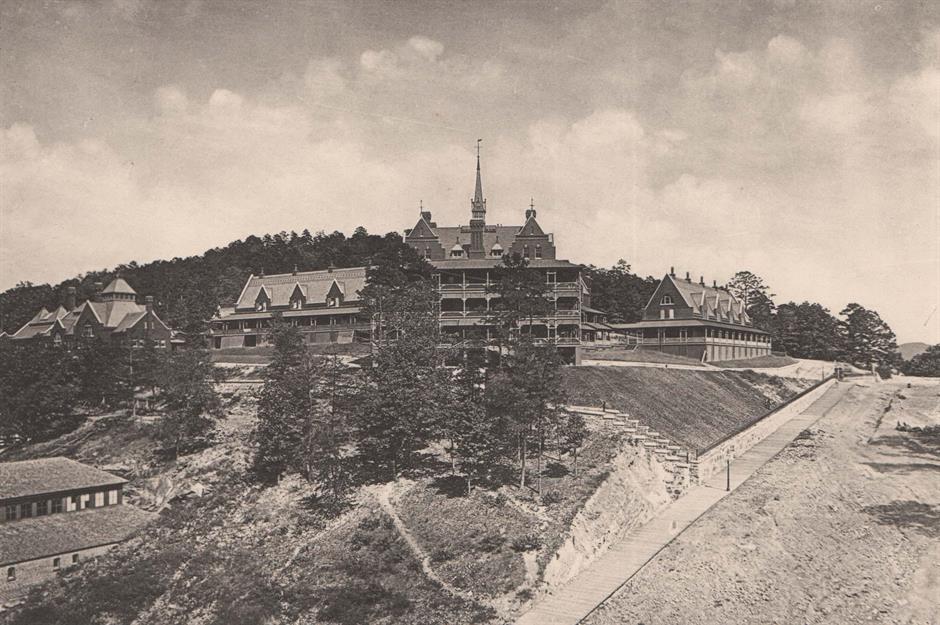
What is now known as Hot Springs National Park was designated an area of preservation and recreation by the federal government in 1832 – four years before Arkansas even became a state. Various bathhouses and hotels soon sprung up, along with the Army and Navy Hospital for recuperating servicemen in 1887 (pictured here in 1893). Some two and a half million visitors still flock to the historic spa town each year, with many taking the waters at the remaining bathhouses.
Love this? Follow us on Facebook for history and travel content
California: San Francisco Harbor, San Francisco
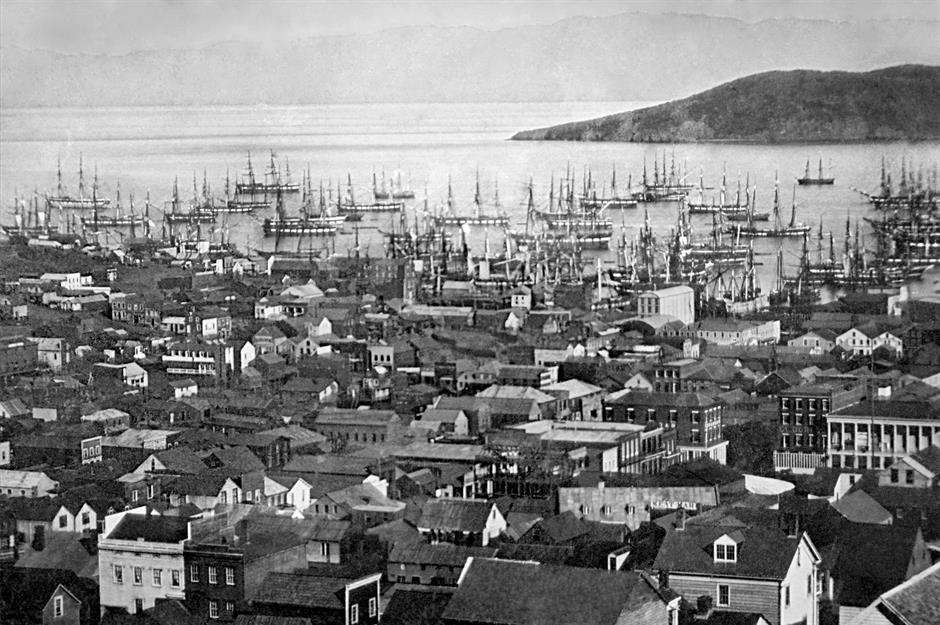
San Francisco has long had a reputation as one of America's most vibrant cities. Founded as a military stronghold by Spanish settlers in 1776, the city boomed during the California Gold Rush in the mid-19th century, when the city's population soared from roughly 1,000 to nearly 25,000 in the span of a year. This photo depicts San Francisco Harbor in 1850 or 1851 with Yerba Buena island in the background, now home to Panorama Park and the 69-foot-tall Point of Infinity sculpture.
Colorado: Pikes Peak, Colorado Springs
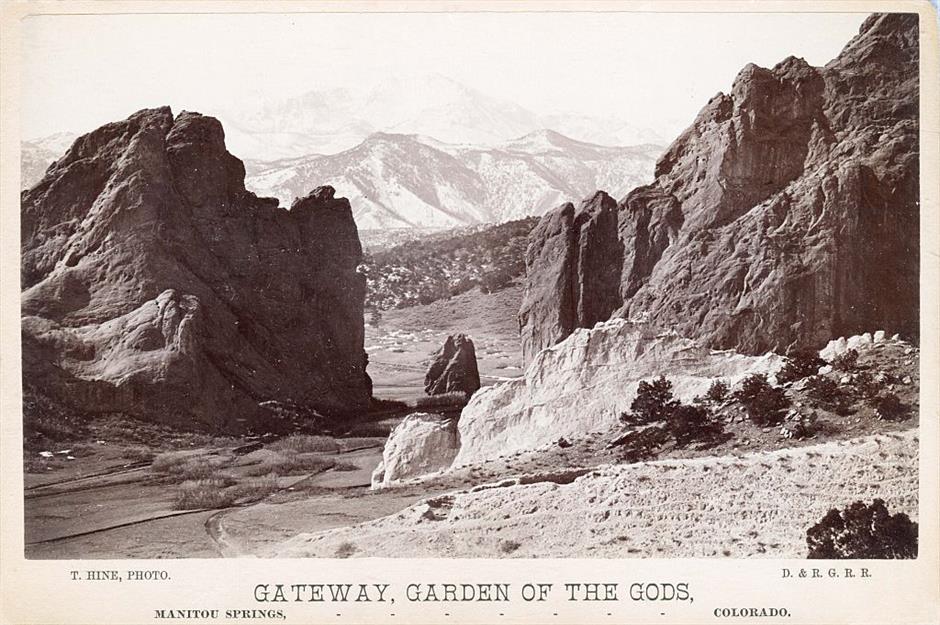
Pikes Peak is perhaps best known for being the inspiration for America the Beautiful. Teacher and poet Katharine Lee Bates was inspired to write the opening lines of America's most patriotic song during a trip to the Rocky Mountains in 1893, a few years after this photo was taken with the Garden of the Gods in the foreground. Bates' work was published as a poem two years later, and it was eventually put to music to become the song as we know it in 1910.
Connecticut: Mark Twain House, Hartford
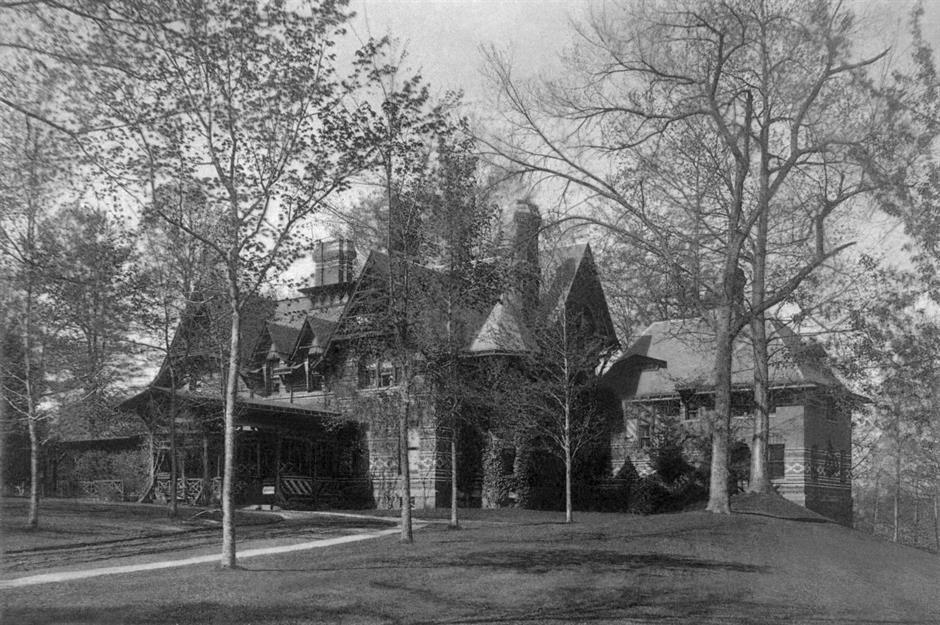
Humorist, journalist, lecturer, and author Mark Twain is best known for his boyhood adventure stories and travelogs. And it was partly at his home in Hartford, pictured here in 1893, that he wrote famous works like The Adventures of Tom Sawyer and Adventures of Huckleberry Finn. The faithfully restored 25-room house, which the family lived in from 1874 to 1891, is now a National Historic Landmark and museum dedicated to one of America's most beloved writers.
Delaware: Old Swedes Church, Wilmington
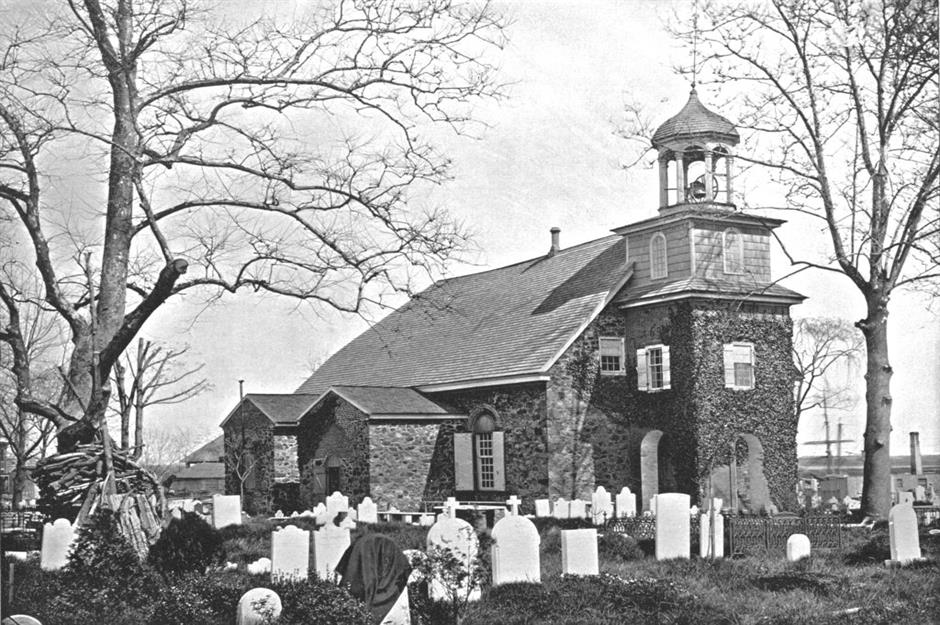
The Old Swedes Church in Wilmington is historically significant, as it is widely considered one of America's oldest church buildings that's still in regular use. Built by the Swedish government in 1698-99 as a Swedish Lutheran church to support the nearby New Sweden Colony, it was designated a National Historic Landmark in 1961. Pictured here at the end of the 19th century, its library and archives extensively cover the Swedish colonial period and beyond.
Florida: Key West, Florida Keys
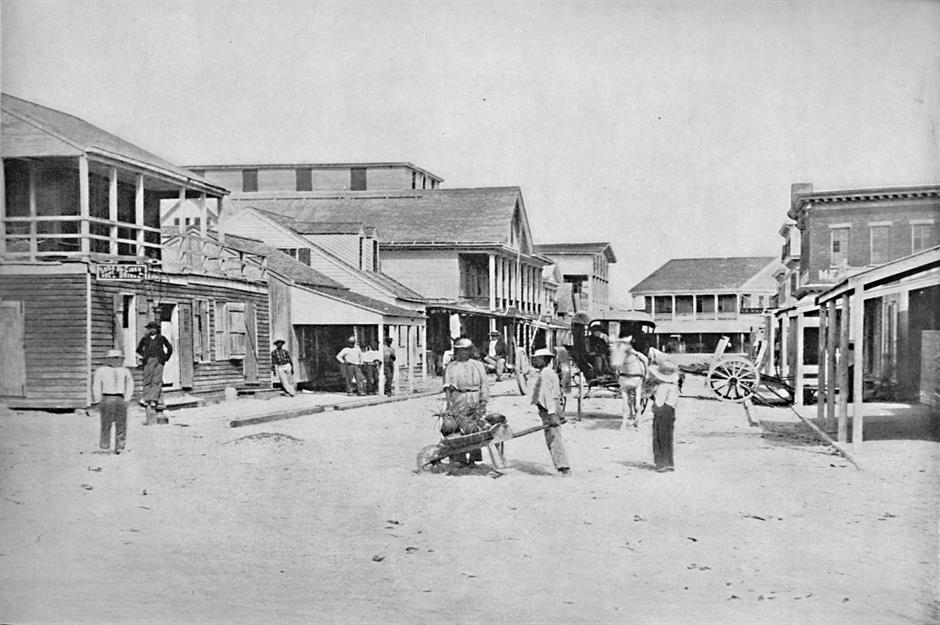
Originally inhabited by Native American peoples, the island of Key West was largely under Spanish rule until 1822, when it was transferred to the United States. Nowadays Key West is known for its architecture and Old Town, diverse arts scene, and stunning sunsets, but it was relatively isolated until 1912 when it was connected to the mainland via an extension of the Overseas Railroad. This Key West street scene was probably taken by Professor George R Cromwell in the 1890s.
Georgia: Forsyth Park, Savannah
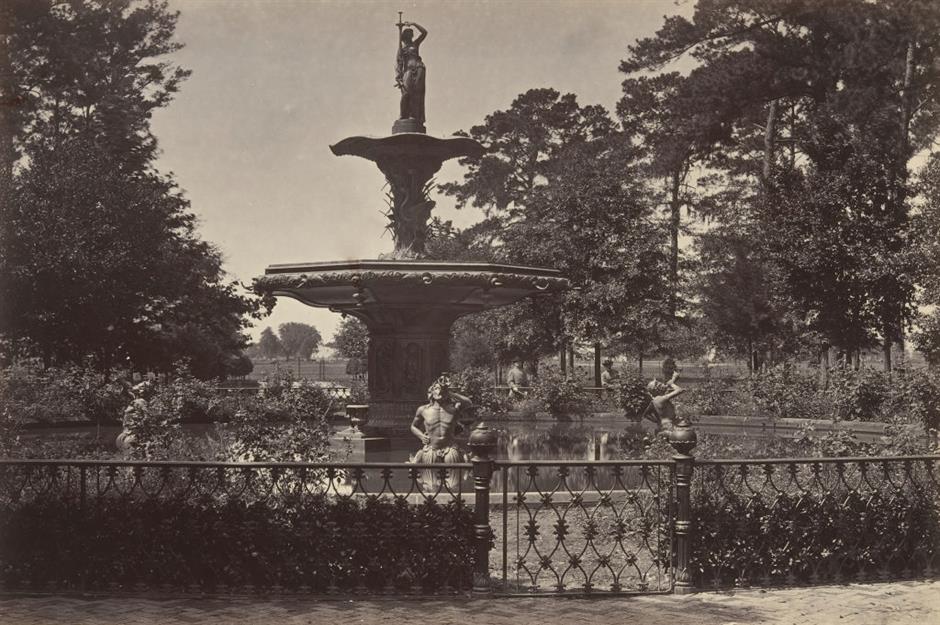
Savannah is one of America's finest historic cities; the birthplace of the Georgia colony, millions come here each year to admire the antebellum architecture, cobbled streets, and lush public spaces. At its heart is Forsyth Park, a popular gathering point and home to a distinctive fountain that was erected in 1858 – just a few years before this photo was taken. Few people realize that the fountain was actually ordered from a catalog, with similar designs in New York, Peru, and France.
Hawaii: Iolani Palace, Honolulu
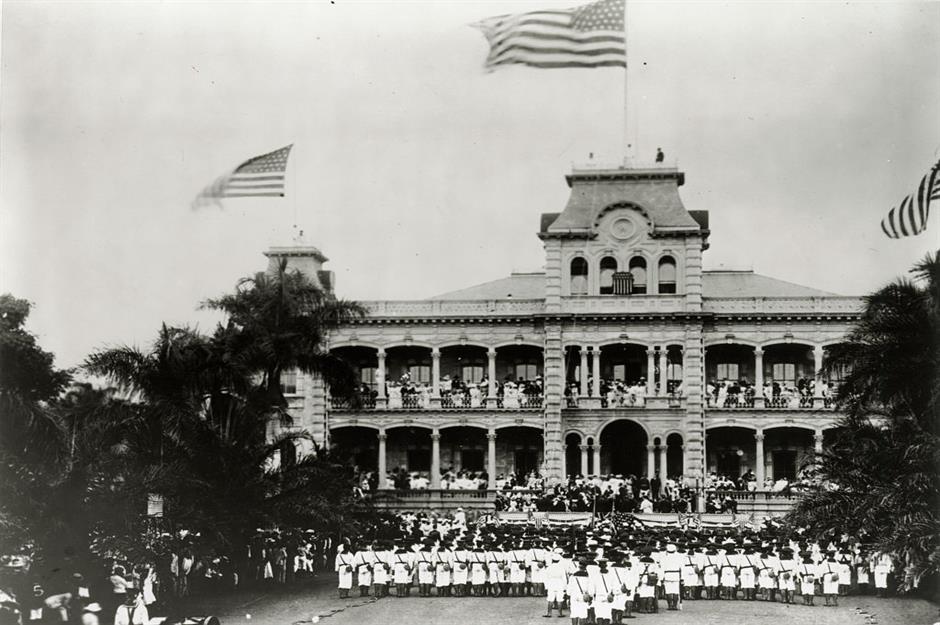
Built in 1882 by King Kalakaua, Iolani Palace housed Hawaii’s last monarchs and was their official royal residence until the overthrow of the monarchy in 1893. The only official royal residence in the United States, it was made a National Historic Landmark in 1962. Pictured here are sailors from the USS Boston forming an honor guard in front of the palace during a ceremony marking the official annexation of the Hawaiian islands by the US in 1898.
Idaho: Shoshone Falls, Twin Falls
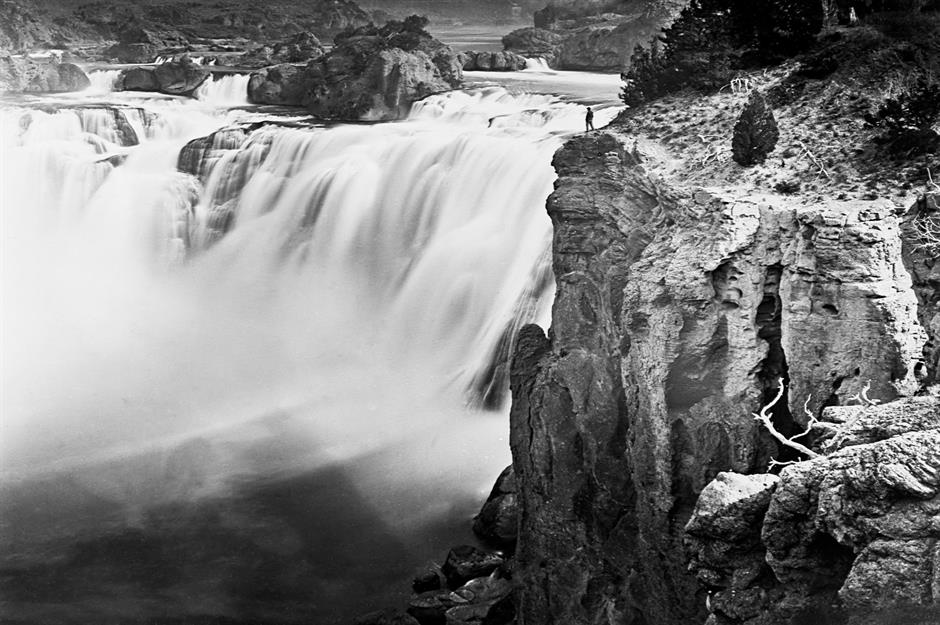
Idaho's Shoshone Falls are often called 'the Niagara of the West,' although at 212 feet tall they actually surpass the height of their eastern counterpart. Pictured here around 1868, the falls are found on the Snake River as it passes through a basalt canyon on its way to join the Columbia River. The best time to visit Shoshone Falls is in the spring when melting snow swells the current, as in summer a portion of the river is diverted for irrigation, reducing the water flow.
Illinois: Ferris wheel, Chicago

Ferris wheels may be a common sight in cities and fairgrounds nowadays, but all descend from the 1893 original. Built for the Chicago World's Fair to rival the Eiffel Tower, unveiled at the Paris Exposition four years prior, George Washington Gale Ferris Jr's 264-foot-tall ride featured 36 gondolas that carried 1.4 million passengers over the course of 19 weeks. Yet, after facing financial issues, the wheel was disassembled, moved, and finally demolished with dynamite in 1906.
Indiana: Hoosier National Forest, Bedford
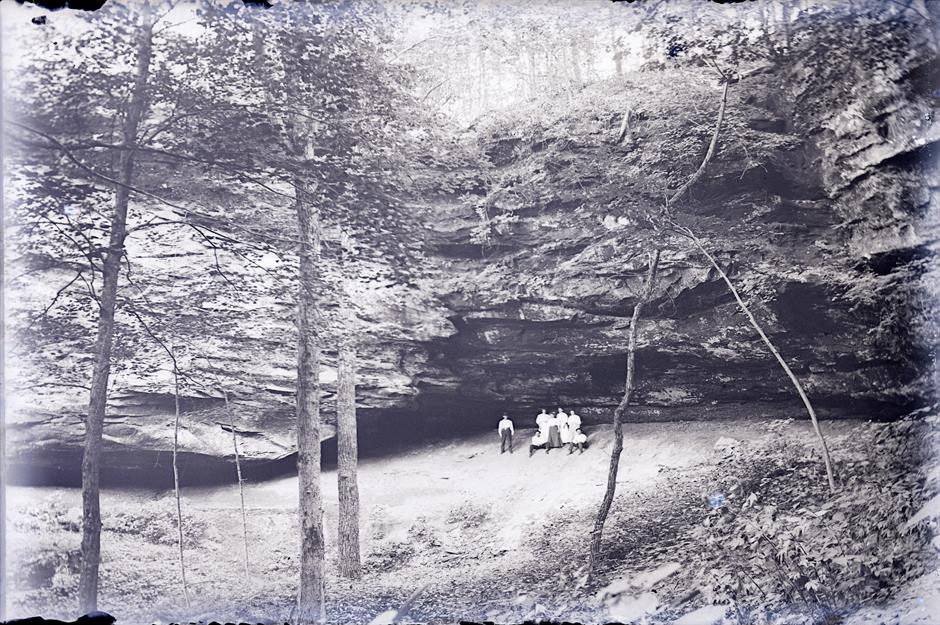
Hoosier National Forest in southern Indiana comprises about half the state's public forest land. The area has been inhabited continuously from as early as 12,000 years ago, first by Native Americans and later by Europeans and African Americans, while this image shows visitors to the forest around 1890. Efforts to purchase the land for a forest reserve began in 1935, and it was formally created in 1961, with further land purchases over the years increasing its size to over 200,000 acres.
Iowa: Iowa State Capitol, Des Moines
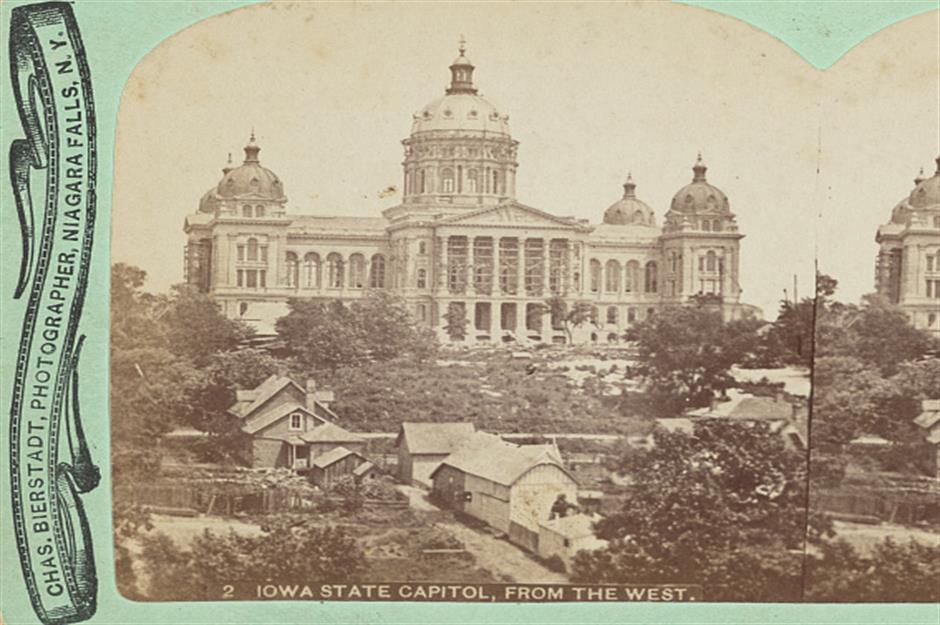
The Iowa State Capitol is the only one in the country with five domes – one gilded main dome with four smaller copper ones. Construction began on the building in 1871, when the state was scarcely 25 years old, and was finally completed in 1886. Unfortunately, a fire broke out as the gaslights were being converted to electric lights in 1904, meaning that the beautiful artwork on the ceiling of the Chamber of the House of Representatives only dates back to 1905.
Kansas: Front Street, Dodge City
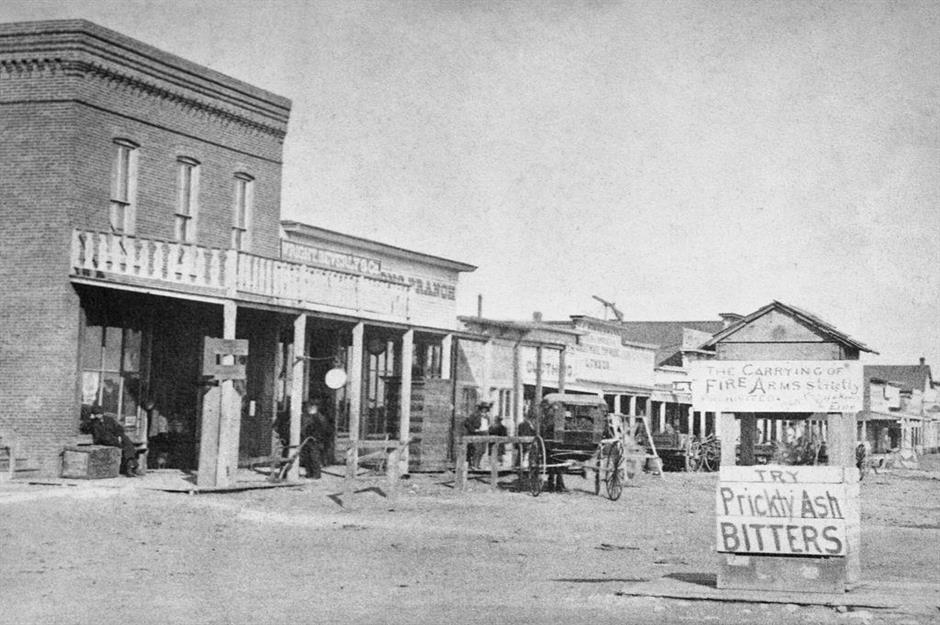
Dodge City gained notoriety during the Wild West era. Settled in 1872 with the arrival of the Santa Fe Railway, it soon boomed as a cattle town full of cowboys and became known for lawlessness and gunfights, with characters like Wyatt Earp and Bat Masterson becoming legends of the West. Front Street, once one of the world's most lawless thoroughfares and pictured here around 1880, has been restored and is now a popular tourist attraction.
Uncover the surprising history and secrets of America's Old West
Kentucky: Churchill Downs, Louisville
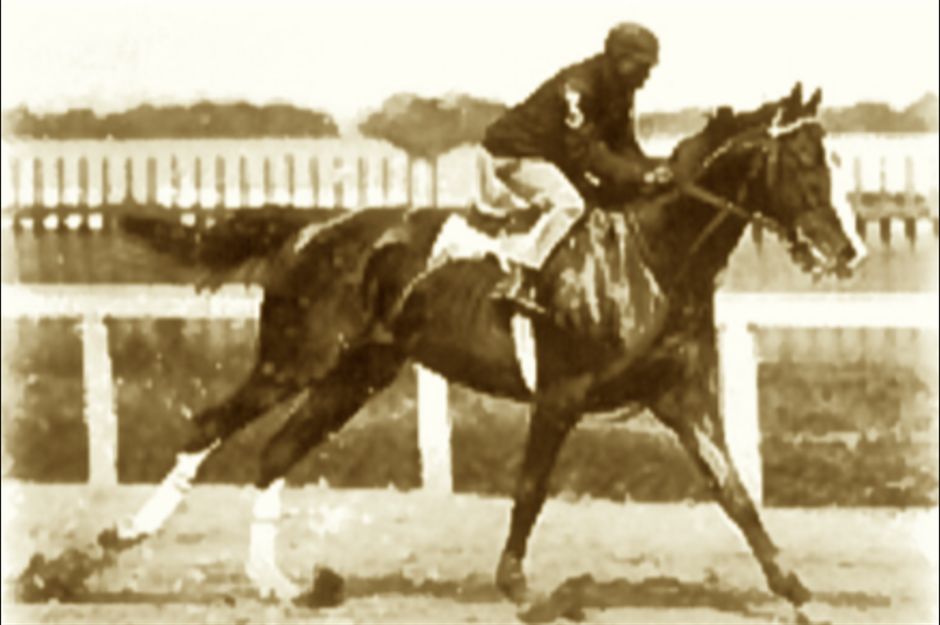
Churchill Downs is the historic home of the world-renowned horse race, the Kentucky Derby – America's longest continually running sporting event. The track's inaugural race in 1875 attracted 10,000 spectators and was won by African American jockey Oliver Lewis on horse Aristides (pictured), who was trained by a former slave, Ansel Williamson. The event remains one of the most prestigious on the racing calendar, attracting an attendance of roughly 150,000 plus a vast TV audience.
Louisiana: Mardi Gras parade, New Orleans

While the origins of Mardi Gras can be traced back to medieval Europe, the parade associated with New Orleans dates back to the 18th century when it was introduced by French settlers. But things really took off in 1872, when the city sought to promote tourism during the Reconstruction era. This photo was taken all the way back in 1890, but modern festival-goers will spot similarities to present-day parades, with costumes and colorful carnival floats galore.
Maine: Old Orchard Pier, Old Orchard Beach
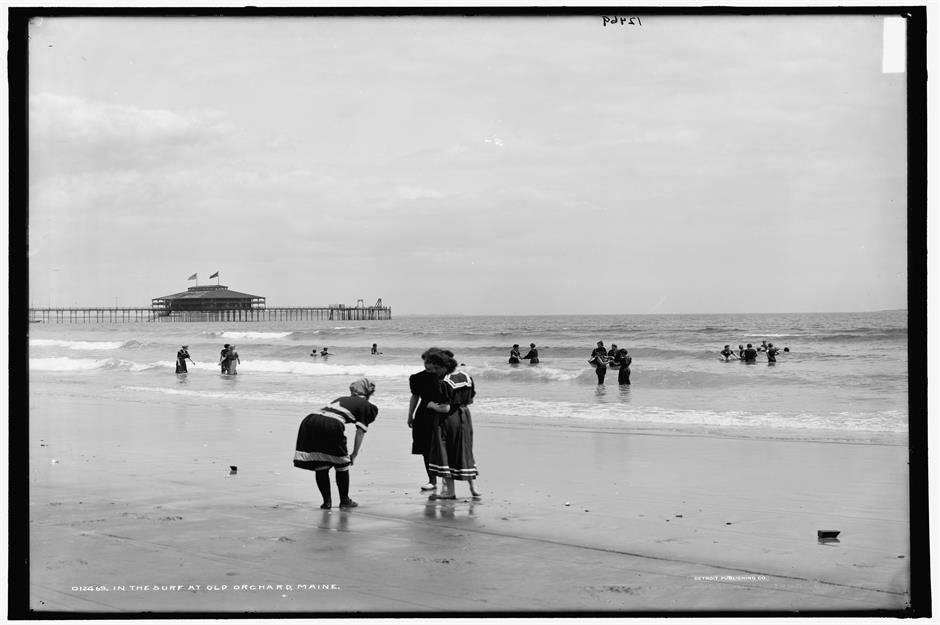
The Maine resort town of Old Orchard Beach has been welcoming visitors for nearly 200 years. The first guesthouse opened here in 1829 and the first pier was constructed in 1898, probably only a year or two before this photo was taken. The modern-day pier is shorter than the 1,800-foot original, which was damaged by storms and fire and eventually obliterated by the Great Blizzard of 1978, but it still has plenty of places for beachgoers to eat, drink, and shop,
Maryland: Burnside Bridge, Sharpsburg
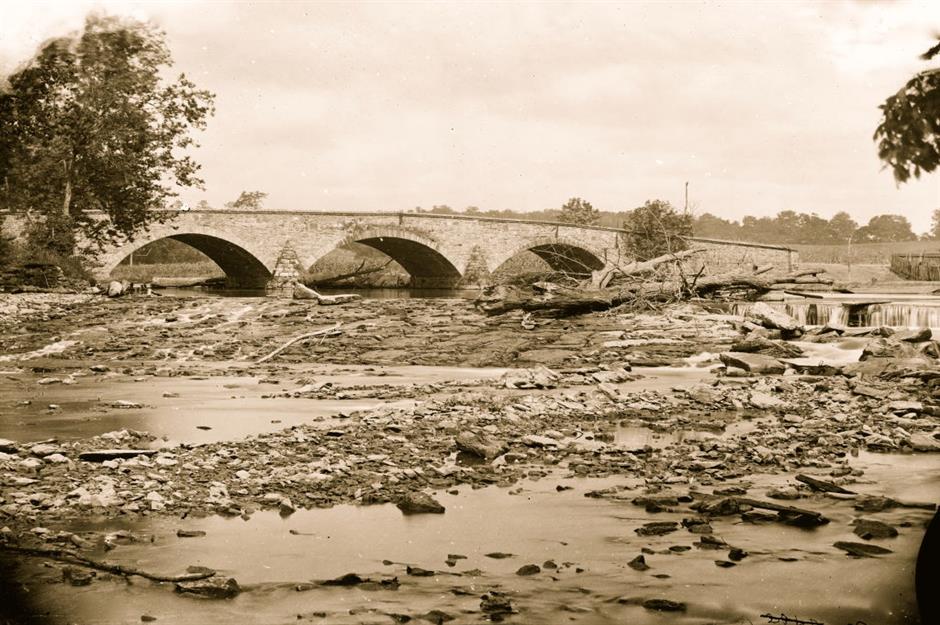
Burnside Bridge, which crosses Antietam Creek in Maryland, was the site of one of the bloodiest battles in the Civil War. The fighting around the bridge was a key part of the 1862 Battle of Antietam (it's pictured here in the same month as the battle), which pushed the Confederates back and showed that the Union could hold their own in the Eastern Theater of the conflict. The bridge, which was finally closed to traffic in the 1960s before being restored, can be visited at Antietam National Battlefield.
Massachusetts: Harvard, Cambridge
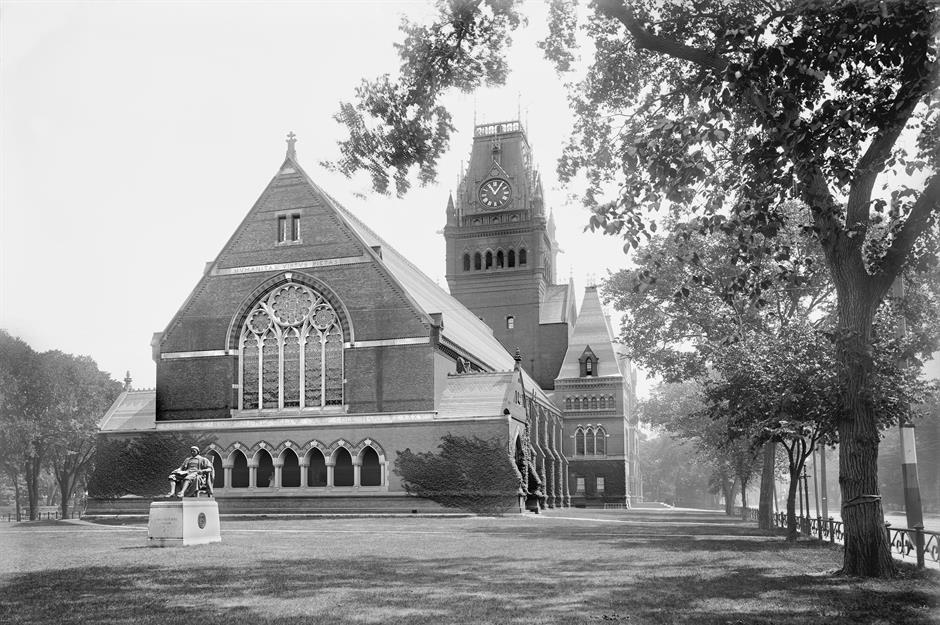
Founded in 1636, Harvard is the oldest university in the United States. The High Victorian Gothic Memorial Hall, pictured here in the 1890s, was built between 1870 and 1878 to honor the Harvard alumni that sacrificed their lives for the Union during the Civil War. The building now houses the stunning 9,000-square-foot Annenberg Hall (inspired by the great halls of Oxford and Cambridge universities), the Sanders Theatre and the vaulted ceilings of the Memorial Transept.
Michigan: Mackinac Downtown, Mackinac Island
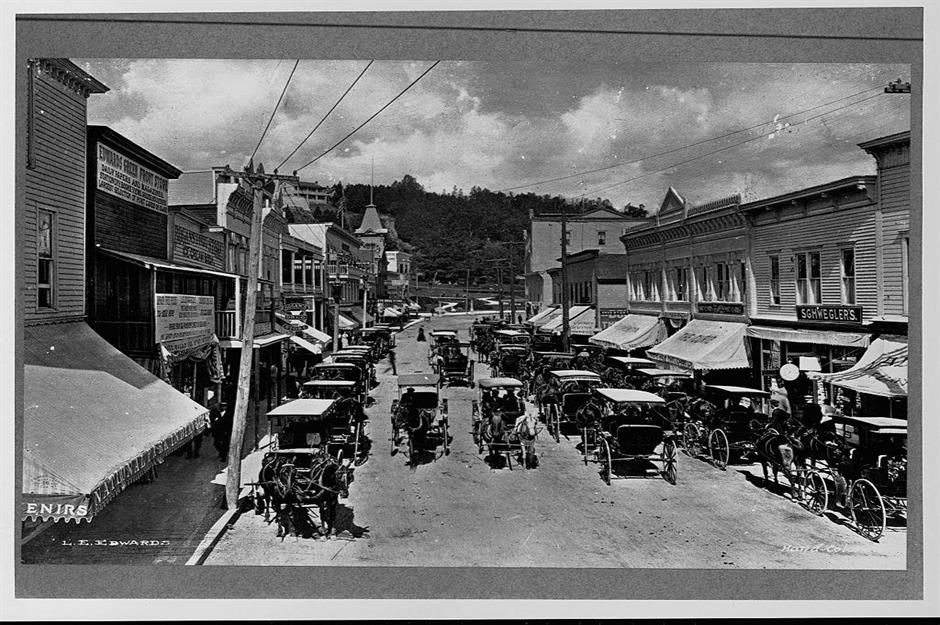
Visitors to Mackinac Island in Lake Huron today could be forgiven for thinking this 19th-century photo was a far more recent image. Cars were banned on the island in 1901, meaning the streets of Mackinac's historic downtown are still home to horse-drawn carriages and now bicycles (though not electric ones). There are a few exceptions to the motor vehicles ban, which was incorporated into state law in 1960, with one police car, two fire trucks, and an ambulance available.
Minnesota: Wabasha County Bluff, Wabasha
.jpg)
Wabasha – named after Chief Wa-pa-shaw III – is Minnesota's oldest community and one of the oldest settlements along the Mississippi. While Native American and fur trading communities here date back to the 1600s and beyond, the site has been continuously occupied since 1826 and was established as a town in 1830. Wabasha's historic district has over 50 buildings listed on the National Register of Historic Places and the former railway line is now a pedestrian path.
Mississippi: Biloxi Lighthouse, Biloxi

Built in 1848, Biloxi Lighthouse was one of the first cast-iron lighthouses in the South, and was civilian-operated until 1939. It was notable for having female lightkeepers, including Maria Younghans who tended the light for 53 years, and was then operated by the US Coast Guard until 1968, when it was handed to the City of Biloxi. Having survived Hurricane Katrina in 2005, the 64-foot-tall Biloxi Lighthouse – pictured here around 1900 – was restored and reopened to the public in 2010.
Missouri: Eads Bridge, St Louis

St Louis's Eads Bridge is something of an engineering marvel, as it was the world's first steel-truss bridge. Pictured here during its construction between 1867 and 1874, the bridge over the Mississippi was deemed essential for the city to survive after the Civil War and the expansion of the railways. The Eads Bridge was named after the engineer who designed it, James Buchanan Eads, and today is the oldest bridge still standing over the Mississippi River.
Montana: Little Bighorn Battlefield National Monument, Crow Agency
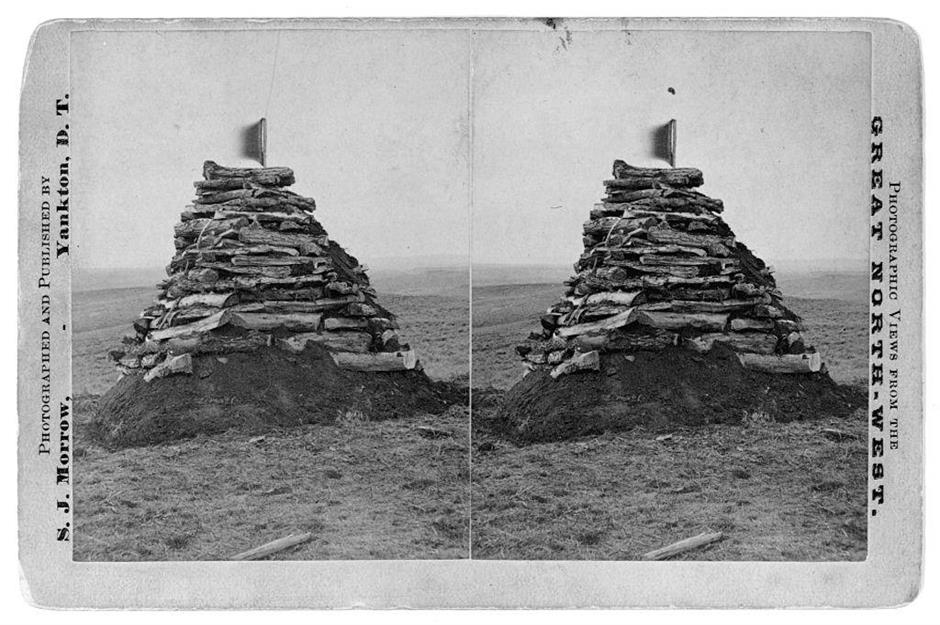
The Little Bighorn Battlefield National Monument in Montana marks the site of the 1876 battle that saw Lakota, Cheyenne, and Arapaho warriors, led by Sitting Bull, defeat federal troops led by Lt Col George Custer, who died in the battle. The victory was fleeting, as the battle led the US government to increase their efforts to force Native American peoples into reservations. This stereoscopic image shows an early monument containing bones found at the battle site.
Nebraska: The Old Market and Downtown, Omaha
.jpg)
The Old Market is Omaha's most historic district. This photo of the edge of 13th and Farnam Streets, with the second Nebraska Territorial Capitol building visible on the horizon, dates back to around 1863, before the state capitol was moved to Lincoln after Nebraska achieved statehood in 1867. The streets around where this image was taken are now a blend of retail spaces, art galleries, restaurants, and loft apartments – making it a popular area with visitors.
Nevada: C Street, Virginia City
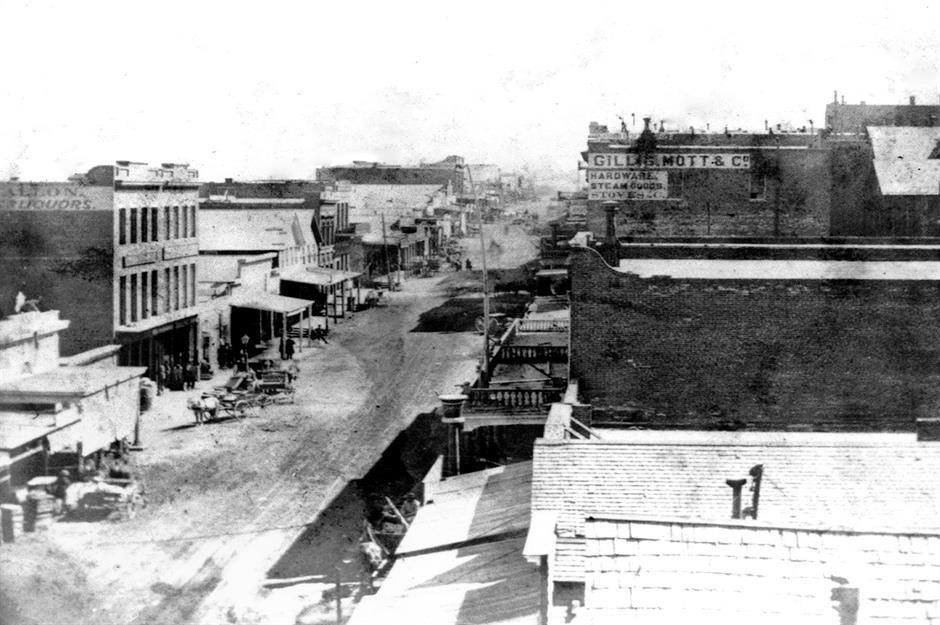
C Street in Virginia City is one of the most historic main streets in America. The perfect place to get a taste of the Wild West, the street was built when people flooded to the area after the largest silver strike in US history in 1859, the Comstock Lode, and is still home to many Victorian-era buildings. This photo was taken from the International Hotel in 1866, and today's visitors can learn about the city's past at the Historic Fourth Ward School Museum, a former schoolhouse dating back to 1876.
New Hampshire: Mount Washington Cog Railway, Mount Washington
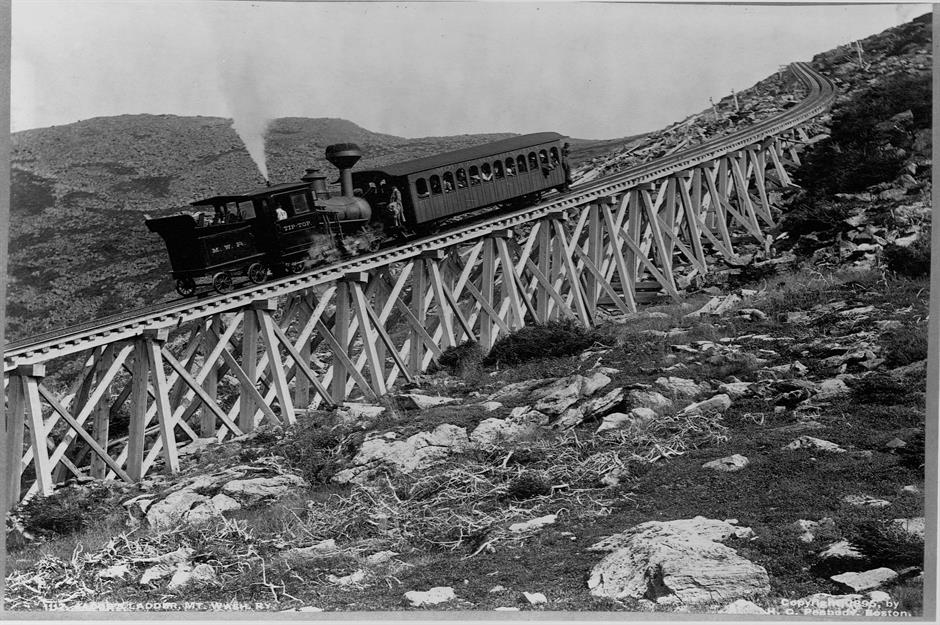
The Mount Washington Cog Railway was the first mountain climbing railway in the world, with its cog rail system enabling it to overcome grades of more than 37%. Work on the railway started in earnest in 1866 while the first train reached the summit on July 3, 1869, and it has ferried tourists up the mountain ever since. The railway – pictured here in 1895 – climbs 3,719 feet from the base station to the top, with an average gauge of 25%.
New Jersey: Boardwalk, Atlantic City
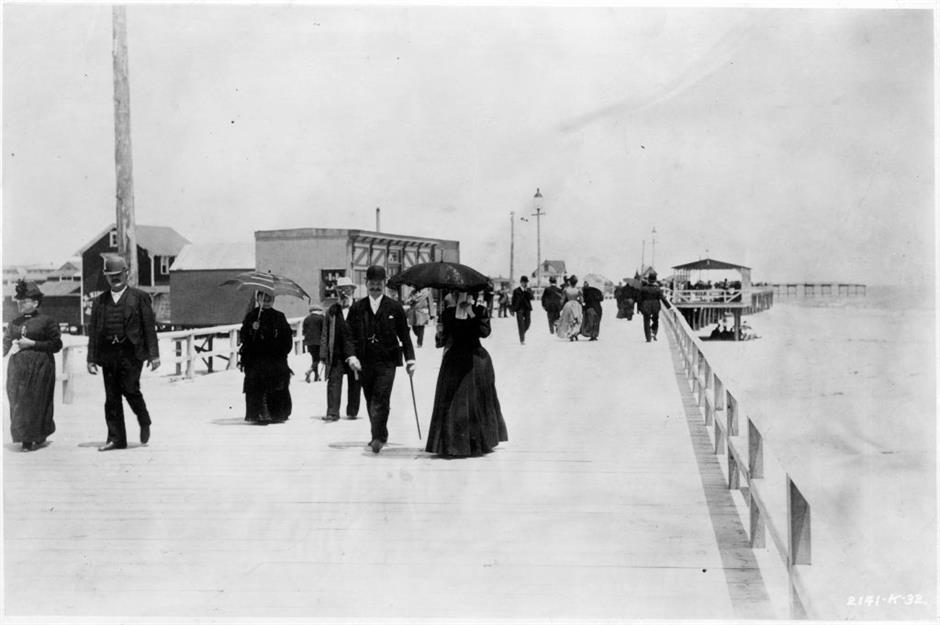
Atlantic City's first boardwalk opened in 1870 when the resort was in its heyday, and was eight feet wide, one mile long, and roughly one foot above the sand. Twenty-five years later Boardwalk was made an official street name, which means it's always capitalized. The Boardwalk, pictured here around 1890, has had several incarnations since and is now a little more than four miles long, 60 feet wide at its widest point, and 12 feet above sea level.
New Mexico: El Morro National Monument, Ramah

The sandstone cliffs of El Morro, also known as Inscription Rock and pictured here in the early 1870s, have attracted visitors for centuries. A sandstone mesa rising 200 feet above the valley, El Morro's sheltered coves and water catchment basin made it an attractive camping spot, with ancestral Puebloans, Spanish conquistadors, and American settlers leaving thousands of inscriptions on the cliff sides. One of the most famous markings is by Juan de Onate as he returned from "the discovery of the South Sea."
New York: Statue of Liberty, Liberty Island
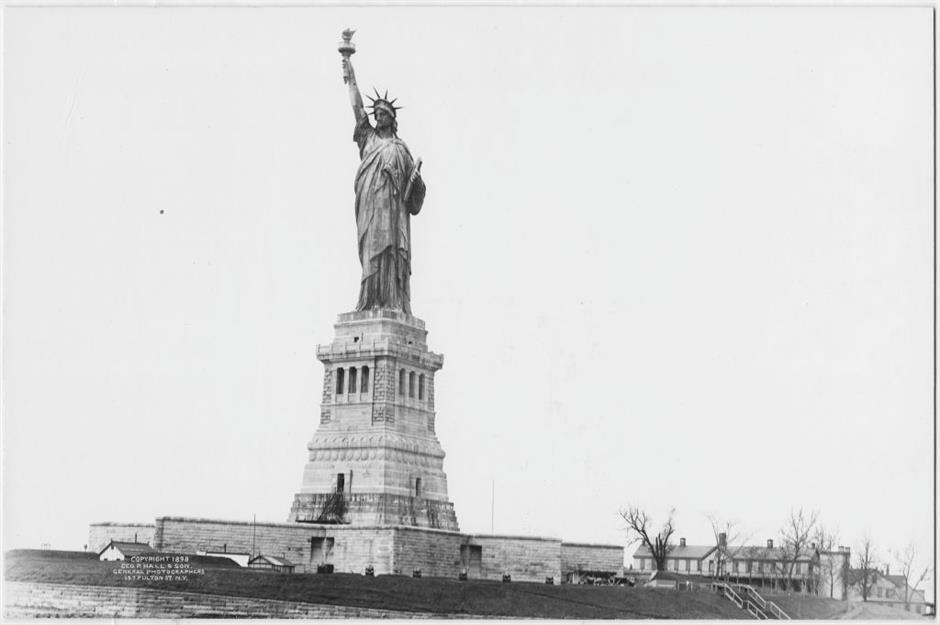
The Statue of Liberty has been looming over New York Harbor ever since its unveiling on October 28, 1886. Officially titled 'Liberty Enlightening the World,' the statue was gifted by France to the United States to symbolize freedom, democracy, and the enduring friendship between the two nations. The 305-foot-tall Lady Liberty (pictured in 1898) is covered by a thin layer of copper, which had already started to oxidize and turn green by 1920, and can sway up to three inches in any direction in heavy winds.
North Carolina: Biltmore Estate, Asheville
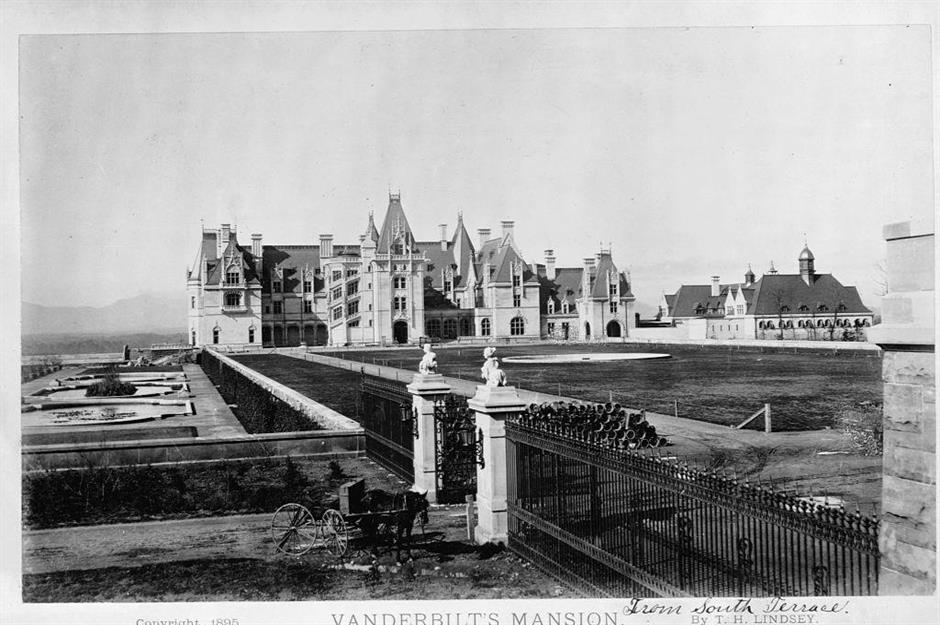
The Biltmore Estate, near Asheville in North Carolina, is known as America's largest privately-owned home. Commissioned by George Washington Vanderbilt and completed in 1895, around when this image was taken, the 250-room French Renaissance-style chateau took six years to build and boasts 35 bedrooms, 43 bathrooms, and 65 fireplaces. The estate is also home to the Vanderbilt family's fine art collection, which includes artworks by Monet, Renoir, and others.
These extraordinary images capture the splendor of America's Gilded Age
North Dakota: Downtown, Fargo
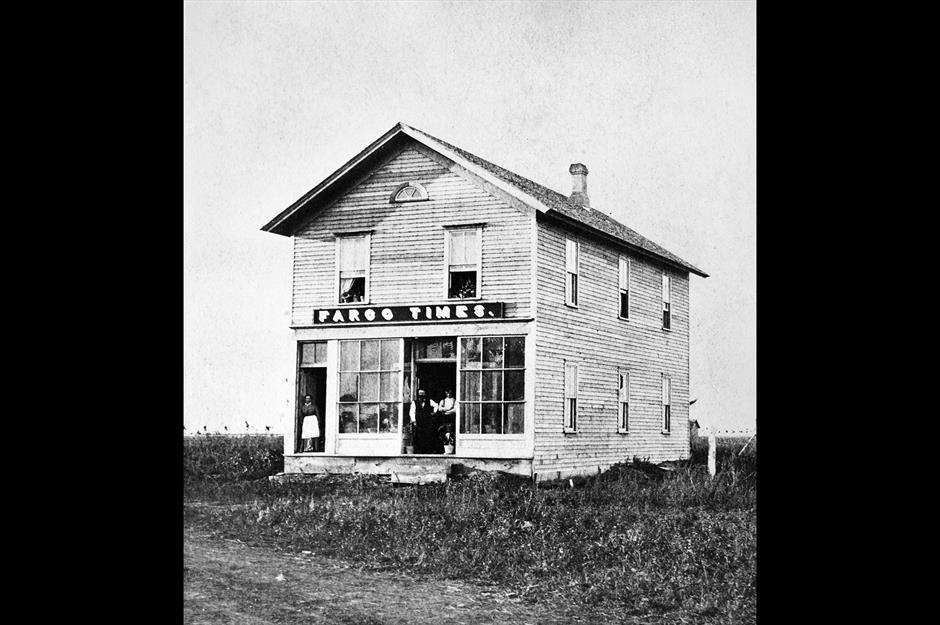
North Dakota's Fargo captured many imaginations when it featured in the Coen Brothers' 1996 Oscar-winning movie of the same name (even though much of the film takes place in Minnesota). Founded in 1871, Fargo served as an outfitting post for settlers thanks to its position by the North Pacific Railway and the Red River. Pictured here is the office of the Fargo Times newspaper, which ran between 1875 and 1880.
Ohio: Riverfront, Cincinnati
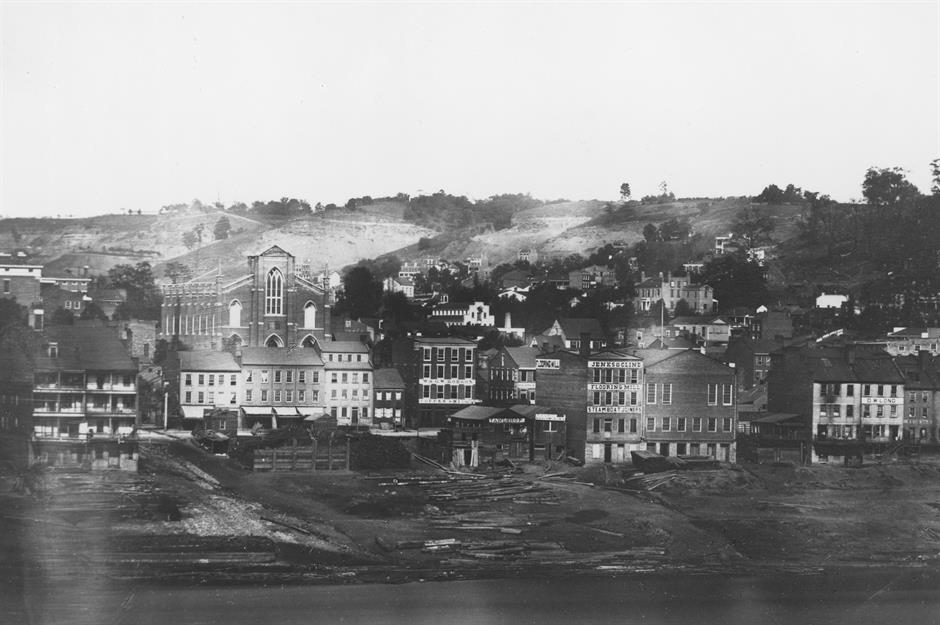
Cincinnati is Ohio's third largest city and the hub of a wider metropolitan area that expands into Indiana and Kentucky. First settled in 1788, it was a busy river port from 1811 and grew in prominence after the opening of the Miami and Erie Canal. Pictured here in 1848, Cincinnati's downtown riverfront once saw 30 steamboats pull in every day, and now houses multiple shoreline parks, two sports stadiums, several other entertainment venues, and multiple residential areas.
Oklahoma: Downtown, Guthrie
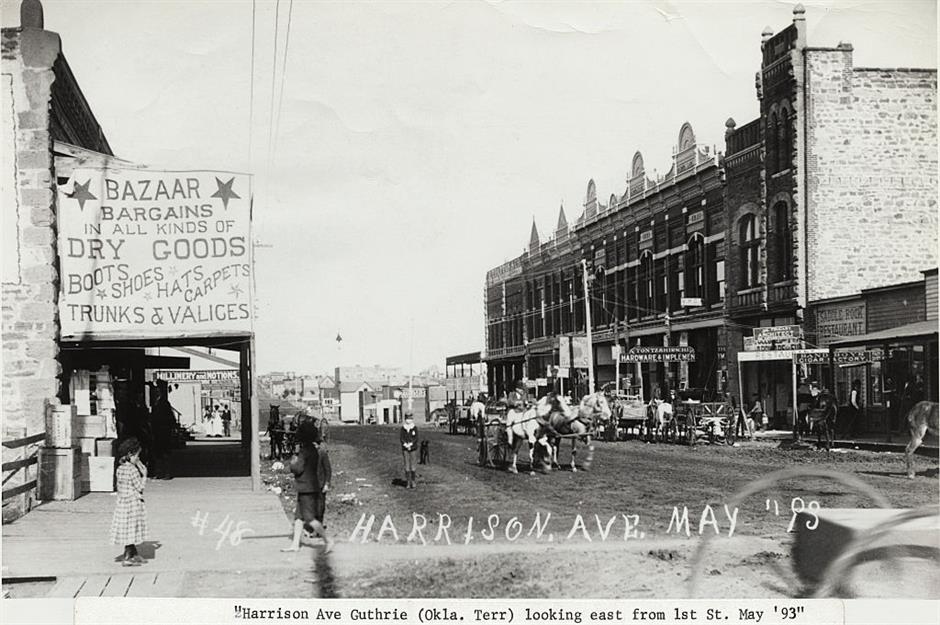
Guthrie sprung into existence on April 22, 1889, when tens of thousands of settlers thundered over newly-ceded plains in a bid to claim and own land. More than 10,000 claims were staked and within months the brick and stone city of Guthrie emerged from the original settlement of tents. Guthrie served as the first and only territorial capital of Oklahoma from 1890 to 1907 and then as state capital from 1907 to 1910, so a portion of its downtown (pictured here in 1893) now makes up a National Heritage Landmark.
Oregon: Downtown, Portland
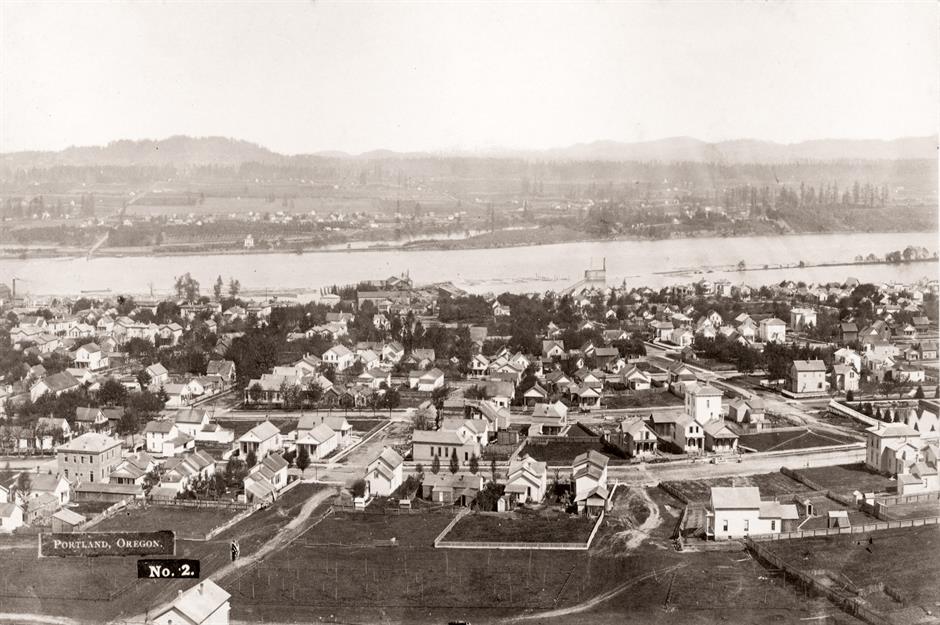
Once known as 'Stumptown' due to the thick forest of trees that settlers needed to clear to establish their settlements, Portland was officially founded in 1843 and its name famously decided by a coin toss between two business partners a couple of years later. Indeed, the 'Portland Penny' in question is still on show at the Oregon Historical Society Museum in the city's downtown, pictured here in the 1880s. Nowadays, Portland's hipster vibe gives West Coast rivals like San Francisco a run for their money.
Pennsylvania: Independence Hall, Philadelphia

Philadelphia's Independence Hall is famous for being the birthplace of the United States, as it was here that the Declaration of Independence and the US Constitution were both signed. This photo was taken on February 22, 1861, when Abraham Lincoln made a notable speech here during a stop on his inaugural tour to Washington – on the same day as George Washington's birthday. The site is now a National Historical Park and a UNESCO World Heritage Site.
Rhode Island: The Towers, Narragansett
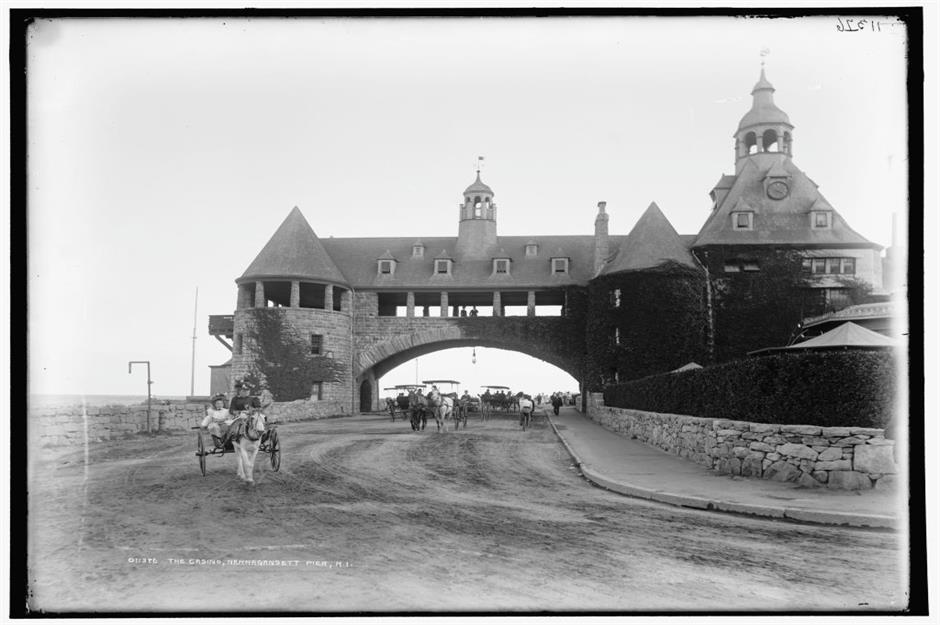
The Towers were a key part of Narragansett Pier Casino, which was built between 1883 and 1886 during the area's heyday as a thriving resort. However, Narragansett was rocked by a terrible fire on September 12, 1900, which ravaged the town center and Casino, leaving only the granite walls of the Towers standing. Pictured here around a year before the disaster, the Towers were renovated and went on to survive another fire and several hurricanes through the 20th century.
South Carolina: Fort Sumter, Charleston
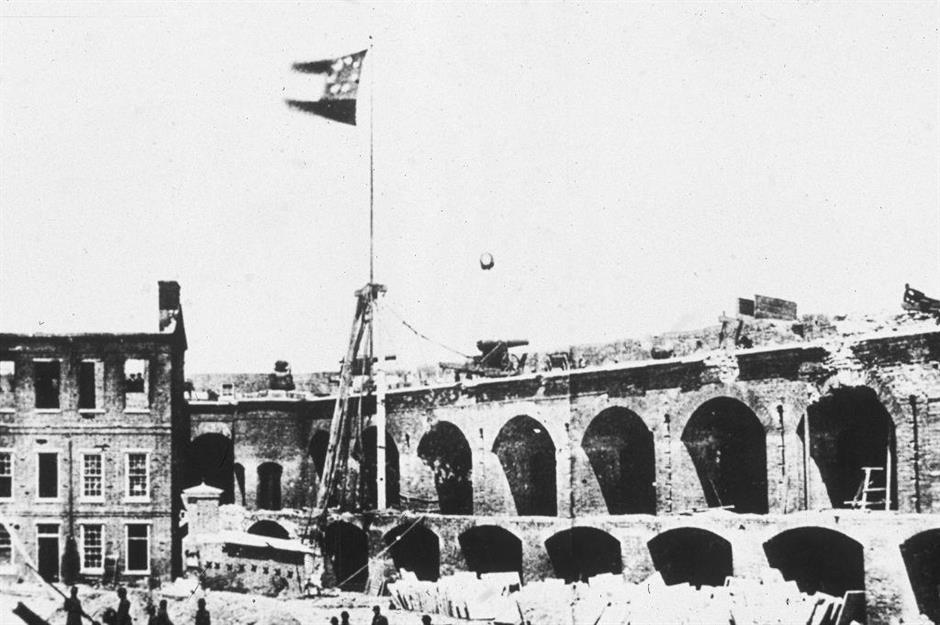
Fort Sumter is famed in the annals of US history for hosting the opening engagement of the American Civil War. Situated at the entrance to Charleston Harbor, the fort held enormous value as a symbol of the North and was attacked by Confederate forces in April 1861. Pictured here after the battle, with damaged walls and a Confederate flag flying from the flagpole, the fort is now run by the National Park Service and is accessible by ferry.
South Dakota: Historic Downtown, Deadwood
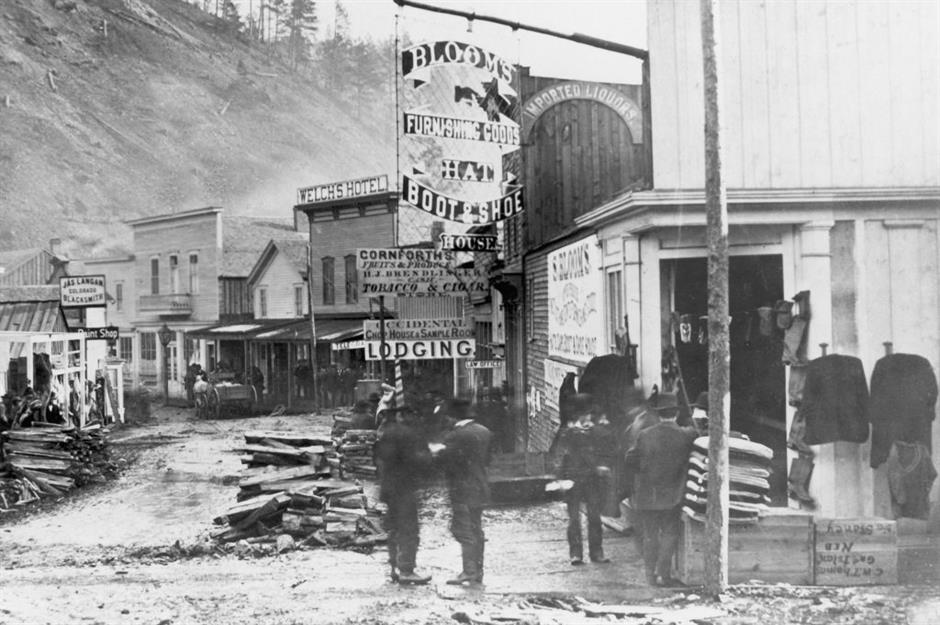
Deadwood is best known as a Wild West town, a history fictionalized in a popular TV series of the same name. Prospectors flocked to the southern Black Hills in 1874 after the discovery of gold, before moving to the site of Deadwood after finding a gold-filled creek in the northern Black Hills two years later. Taken around 1877, this photo captures a snapshot of the Black Hills Gold Rush at its peak – a history that the revamped town continues to emulate for visitors.
Tennessee: Parthenon, Nashville

Nashville's Parthenon was built in 1897 for the Tennessee Centennial Exposition, and played on its nickname as 'the Athens of the South.' Designed to be temporary, residents were so pleased with the exact-size replica that the city decided to keep it after the event, and it now serves as the city's art museum. The temple was rebuilt using concrete between 1920 and 1925, with the current 42-foot statue of Athena being unveiled in 1990.
Texas: Old Spanish Mission, San Antonio

Texas's San Antonio Missions were established by Spanish Franciscan missionaries in the 18th century in order to colonize, evangelize, and defend the frontiers of New Spain. The San Jose Mission, known as 'the Queen of Missions' and pictured here in the 1890s, oversaw the baptisms of more than 2,000 Indigenous people during its 104 years of operation. It is one of four Spanish missions that can be visited today along an eight-mile stretch of river.
Utah: Golden Spike National Historical Park, Brigham City

Golden Spike National Historic Park is the site where the last spike was driven into the ground to mark the completion of the first transcontinental railroad across America on May 10, 1869. The moment the Central Pacific and Union Pacific lines were joined was captured in this photo, entitled 'East and West Shaking Hands at Laying of Last Rail' and taken by Andrew J Russell, which became known as 'the Champagne Photo' as bottles were broken on each of the rival locomotives to celebrate.
Vermont: Historic Downtown, Brattleboro

Set beside the Connecticut and West rivers, the Vermont town of Brattleboro dates all the way back to 1724, when Fort Dummer became the first English settlement in Vermont. It was chartered in 1753 and named after the landowner William Brattle Jr (who never actually lived in the town), while the population surged in the mid-19th century with the arrival of the railroad. Pictured here is Brooks House on the corner of High and Main Streets in 1890, once one of the finest hotels in New England and now a mixed-use facility.
Virginia: George Washington's Home, Mount Vernon
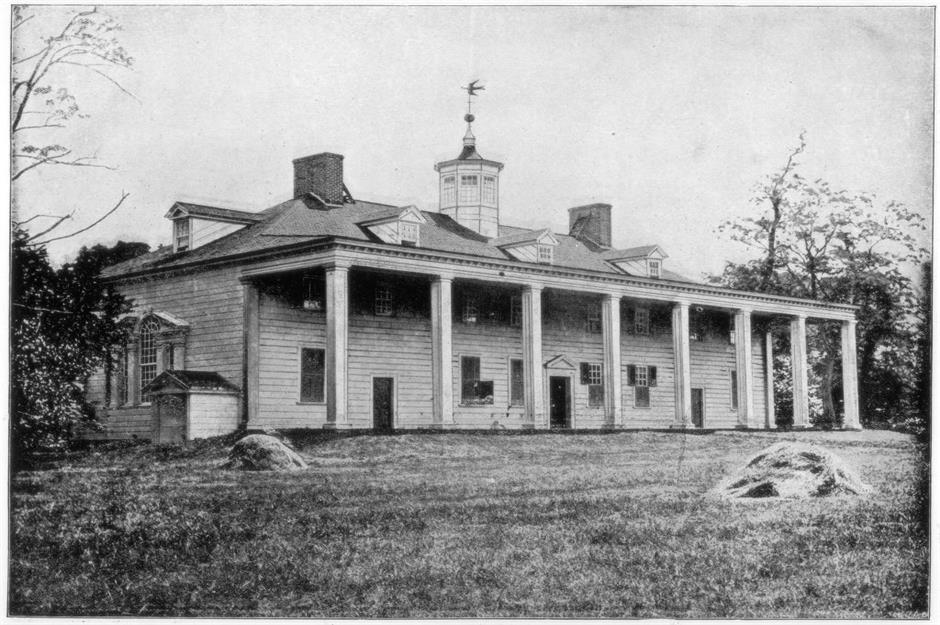
Virginia's Mount Vernon is synonymous with its most famous resident, George Washington – the first president of the United States. This 18th-century wooden mansion is where the Founding Father lived and died, and has been faithfully restored to what it would have been like when his family occupied it. Pictured here around 1895, the mansion was 10 times the size of the average home in colonial Virginia and has a weather vane in the shape of a dove of peace, commissioned by Washington himself.
Washington: Pioneer Square, Seattle
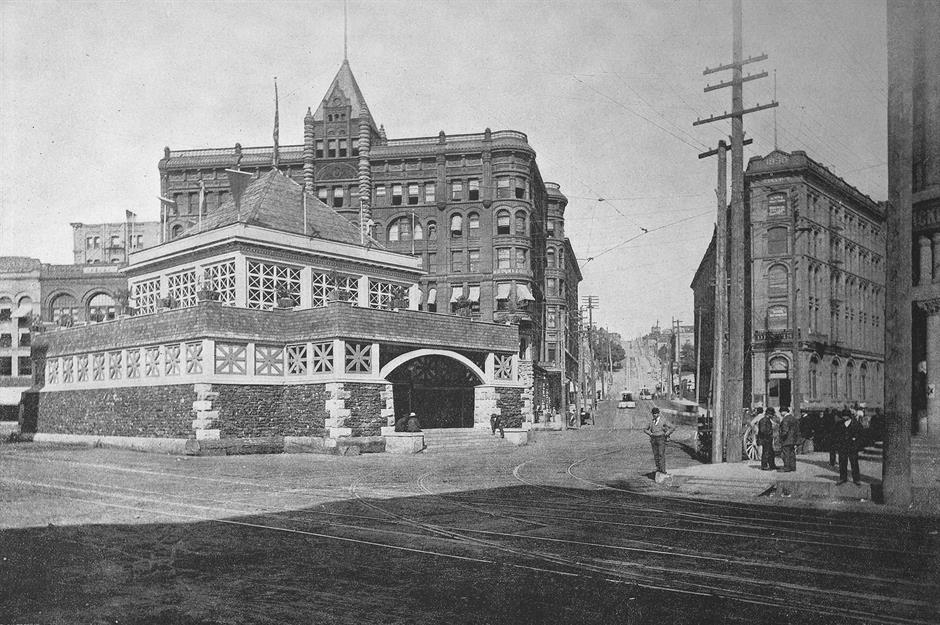
Pioneer Square was Seattle's first neighborhood, established in 1852, and was rebuilt in full Victorian Romanesque glory after the Great Seattle Fire of 1889 to showcase the city's increasing wealth. Pictured here in around 1899 is the temporary Mineral Palace, built to celebrate the arrival of the Great Northern Railway. Today the square is the center of the city's art scene and pays homage to its original inhabitants, the Coast Salish people.
West Virginia: John Brown's Fort, Harpers Ferry
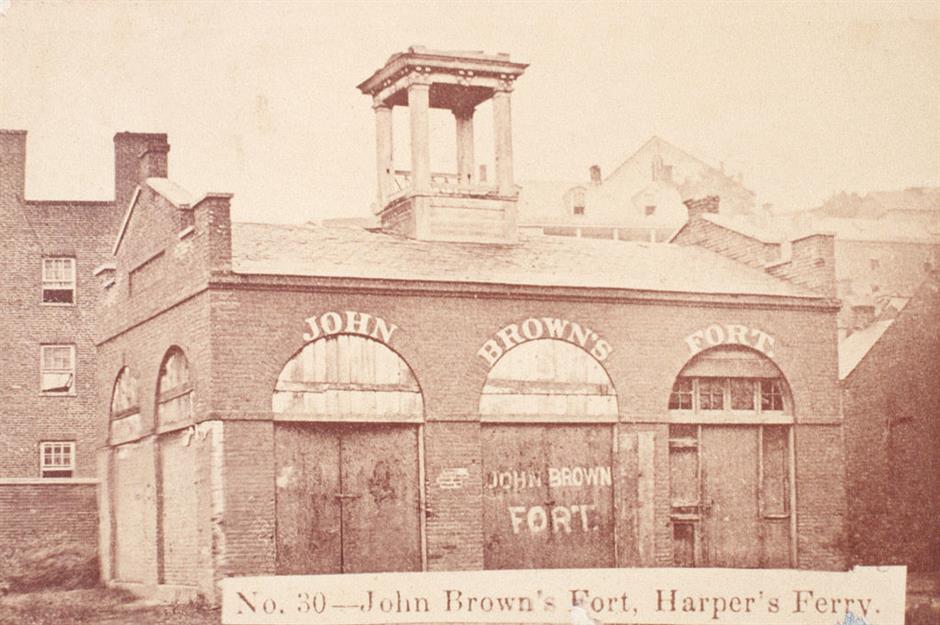
John Brown's Fort at Harpers Ferry, now in West Virginia, is where militant abolitionist John Brown and his fellow insurgents barricaded themselves in 1859 following their notorious raid on the federal arsenal at Harpers Ferry. This raid made him an icon of the antislavery cause and heightened animosities in the run-up to the American Civil War. This photo shows the so-called 'fort' that sheltered him and his group in the final hours before their capture, and is now a National Historical Park.
Wisconsin: RiverWalk, Milwaukee
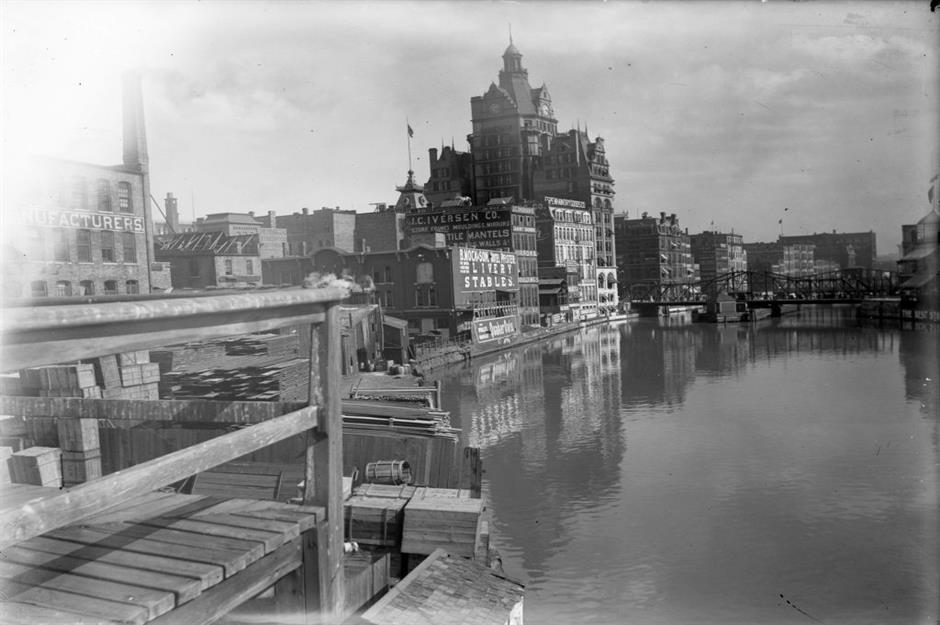
Milwaukee is Wisconsin's largest city and a major port of entry to Lake Michigan. Situated at the confluence of three rivers, Milwaukee grew as a manufacturing and distribution center in the late 19th century, with flour milling, beer production, and leather tanning all key industries. The riverfront (pictured here in 1898) shaped the city for years, but since the 1990s the city has been shaping the riverfront, with the development of the RiverWalk District as a commercial, residential, and entertainment center.
Wyoming: Old Faithful Geyser, Yellowstone National Park
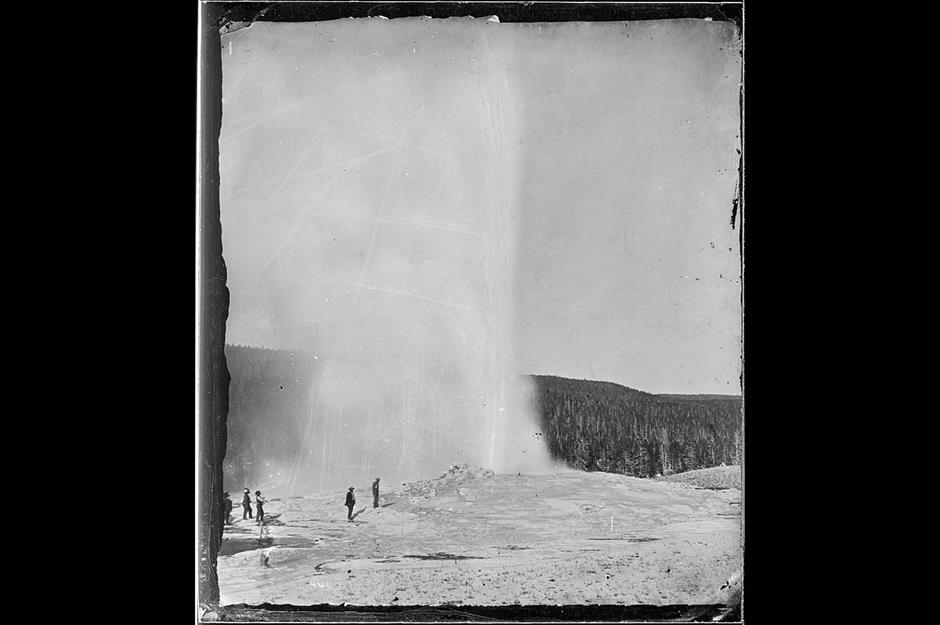
Millions of people watch Old Faithful Geyser erupt each year – indeed, it has been attracting visitors since Yellowstone was made the world's first national park all the way back in 1872, the same year this photo was taken. Old Faithful is one of nearly 500 geysers in Yellowstone, and is one of just six whose eruptions rangers can currently confidently predict. True to its name, the geyser has only lengthened the time between its eruptions by about 30 minutes across the last 30 years.
Comments
Be the first to comment
Do you want to comment on this article? You need to be signed in for this feature